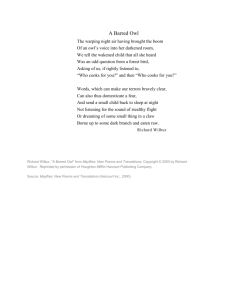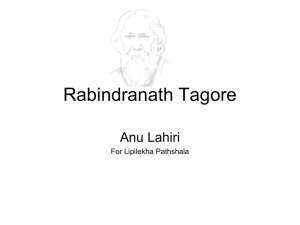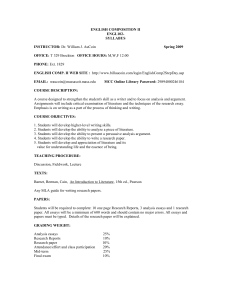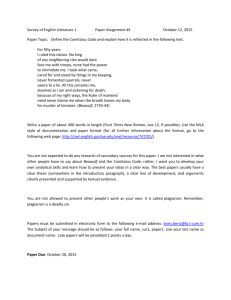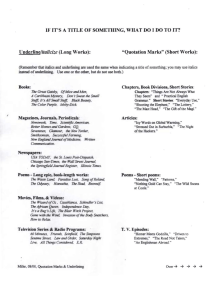Alliance Cindy and Bill Simon Technology Academy Digital Agenda
advertisement
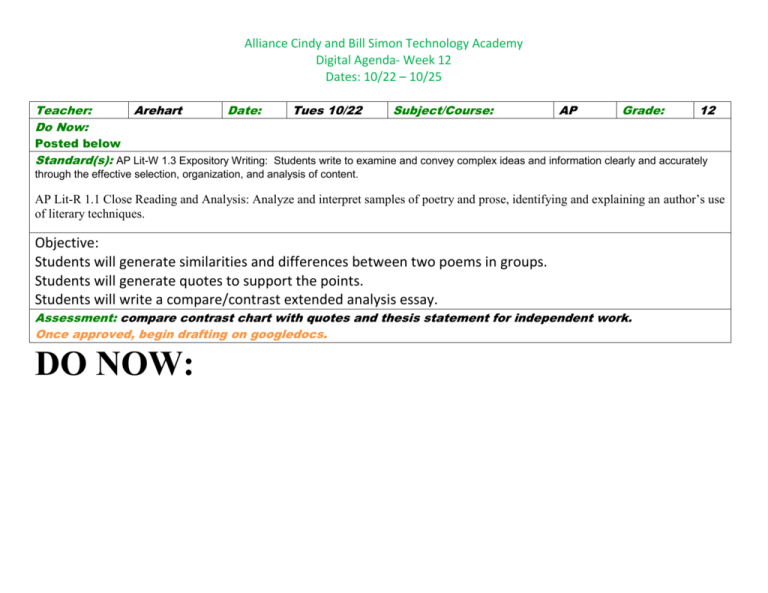
Alliance Cindy and Bill Simon Technology Academy Digital Agenda- Week 12 Dates: 10/22 – 10/25 Teacher: Do Now: Arehart Date: Tues 10/22 Subject/Course: AP Grade: 12 Posted below Standard(s): AP Lit-W 1.3 Expository Writing: Students write to examine and convey complex ideas and information clearly and accurately through the effective selection, organization, and analysis of content. AP Lit-R 1.1 Close Reading and Analysis: Analyze and interpret samples of poetry and prose, identifying and explaining an author’s use of literary techniques. Objective: Students will generate similarities and differences between two poems in groups. Students will generate quotes to support the points. Students will write a compare/contrast extended analysis essay. Assessment: compare contrast chart with quotes and thesis statement for independent work. Once approved, begin drafting on googledocs. DO NOW: Copy these two thesis statements from US: In both poems “A Barred Owl” and “the History Teacher,” adults try to conceal the horror of reality by telling children lies in hopes of soothing their delicate minds. However, Wilbur and Collins’ poems differ in structure and tone. Parents often guide their innocent children to face the world. Both “A Barred Owl” by Richard Wilbur and “The History Teacher” by Billy Collins address this topic. In “The Barred Owl,” Wilbur uses a euphemistic and calm tone to say that when a child is frightened in the night, comforting words will send her back to bed. However, in “The History Teacher,” Collins uses a sarcastic tone to present a teacher who manipulates the child to believe false facts. THE SAMPLE “8” In “A Barred Owl” and “The History Teacher,” two poets describe efforts by adults to soothe the curiosity and fear of young children. However, the literary devices used by the two authors reveal two very different intentions and end results. Whereas Wilbur uses a simple rhyme scheme, a humorous tone and juxtaposition of the rational and the absurd to depict the narrator’s attempt to “domesticate” irrational fears, Collins uses trivializing diction and other devices to show that the teacher’s attempt to shield his students from relevant facts and real-world issues is both ironic and unfruitful. Whole Class: Finish Presentations Independent: Write compare/contrast chart with thesis statement for two poems of choice. Collaborative: Get approved by one other student and Mrs. Arehart. Independent: Begin Drafting. Teacher: Arehart Do Now: posted below Date: 10/23Wed Subject/Course: AP Grade: 12 Standard(s): AP Lit-W 1.3 Expository Writing: Students write to examine and convey complex ideas and information clearly and accurately through the effective selection, organization, and analysis of content. AP Lit-R 1.1 Close Reading and Analysis: Analyze and interpret samples of poetry and prose, identifying and explaining an author’s use of literary techniques. Learning Objective (s): Students will finish drafting their analysis essays in google-docs. Students will fill out peer sheets with other students who are finished with their first drafts. Assessment: Drafts. DO NOW: Sample analyses which need extending. Peer Sheet Practice – Modeling. Independent/Collaborative: Students earn peer sheets by finishing their drafts. Homework: Finish drafting if you haven’t. Teacher: Arehart Do Now: posted below Date: 10/25Fri Subject/Course: AP Grade: 12 Standard(s): AP Lit-W 1.3 Expository Writing: Students write to examine and convey complex ideas and information clearly and accurately through the effective selection, organization, and analysis of content. AP Lit-W 1.5.a Develop and strengthen writing as needed by planning, revising, editing, rewriting, or trying a new approach. Learning Objective (s): Students will revise their essays for development, accuracy, and organization. Students will fill out peer sheets for one another’s essays. Assessment: Revisions due by the end of the period for teacher feedback. BE SURE TO ENTITLE ANOTHER COPY DRAFT2 or YOU WILL LOSE YOUR DRAFT CREDIT! DO NOW: Sample analyses which need developing. Peer Sheet Practice – Modeling. Collaborative: Students provide feedback on development and organization. Independent: Revise essays.
